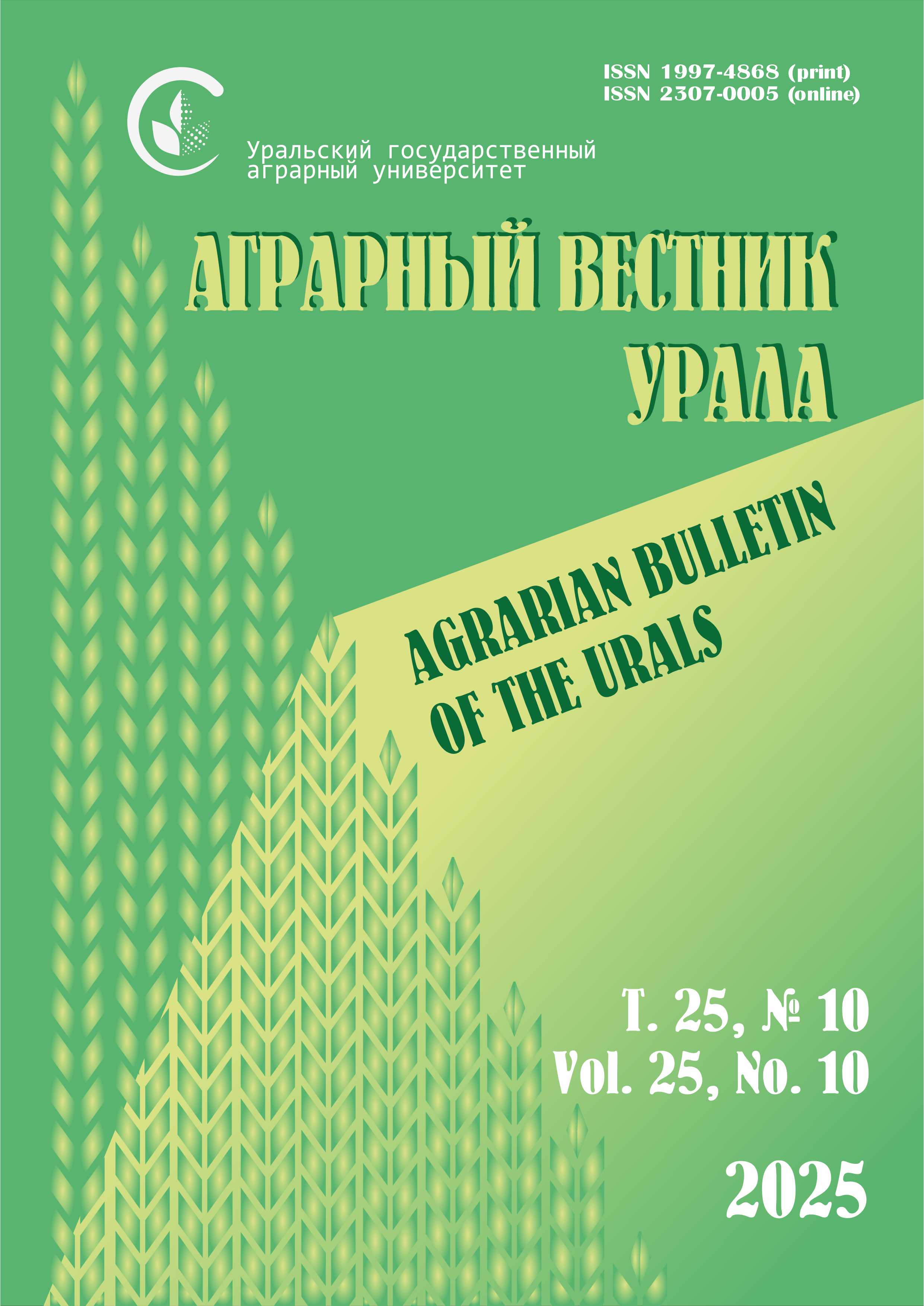Authors:
O. S. CHECHENIKHINA, candidate of agricultural sciences, associate professor,
Ural State Agrarian University (42 K. Liebknehta str., 620075, Ekaterinburg).
Abstract. Studies were conducted in the Tyumen region. The first group included cows of black and motley breed, kept without a tether with the use of a robotic milking system; the second group – Simmental breed cows that are kept without a tether using a robotic milking system; in the third group – animals of black and motley breed, which were kept on a leash and milked into the milk pipeline. For the day from the cows of the first group milk was increased by 1.6 kg (8.2 %) (p < 0.05) than in the second group, by 1.2 kg (6.2 %) than in the third group. The intensity of milk yield is higher in the second group of animals under study by 0.05 kg / min (2.3 %) than in the first group by 0.10 kg / min (4.6 %) (p < 0.001) than in the third group. During the first lactation period, the animals of the first group had an average milk yield of 100, 305 days and for the entire lactation, compared with the cows of other evaluated groups, on average 183.0 (8.8 %) (p < 0.001), 430.5 (8.1 %) (p < 0.001) and 564.0 kg (8.4 %) (p < 0.05) respectively. The animals of the first group had a content of milk fat and protein higher (p <0.001) than in the cows of the second and third groups, on average, by 17.7 (9.2 %) and 18.3 kg (11.2 %) respectively. The average duration of all milking operations for cows is less than milking by milking for 42 seconds. For an hour on the leash four operators with three milking machines can milk up to 75 cows, and with a robotic technology of milking four robots – up to 25 cows. In order to extort 200 head in a linear milking process, six people are needed to milk the milk, and three people are required to squeeze out the same number of animals with the help of a milking robot. In this case, the robotic technology is capable of automatically controlling the milking process in accordance with the characteristics of the udder of cows with simultaneous consideration of milk; can reduce the load on the operator, reduce the number of employees with the preservation of the wage fund. With the same costs for the maintenance of one head and the salary fund of employees, the cost price of 100 kg of produced products is less in the first group of cows than in the second and third groups by 11.3 and 286.9 rubles respectively. The level of profitability of milk production is higher in the first group of animals than in the second group by 0.8 %, from the third group – by 17.9 %.
Keywords: robotic milking, cattle, black and motley breed, Simmental breed, dairy productivity.












